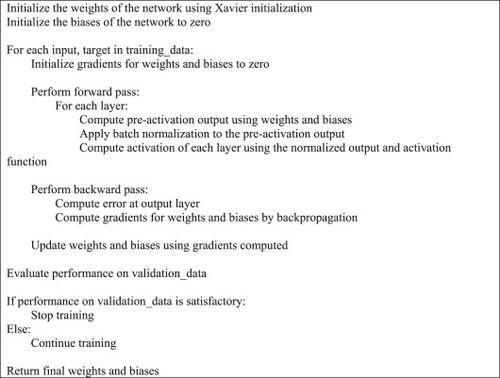当前位置:
X-MOL 学术
›
Build. Environ.
›
论文详情
Our official English website, www.x-mol.net, welcomes your feedback! (Note: you will need to create a separate account there.)
Leveraging artificial neural networks for air humidity measurement in air conditioning systems
Building and Environment ( IF 7.4 ) Pub Date : 2024-03-15 , DOI: 10.1016/j.buildenv.2024.111410 Liu Yang , Yudong Xia , Xi Chen , Yan Chen , Weilin Li
Building and Environment ( IF 7.4 ) Pub Date : 2024-03-15 , DOI: 10.1016/j.buildenv.2024.111410 Liu Yang , Yudong Xia , Xi Chen , Yan Chen , Weilin Li

|
Accurate measurement of air humidity serves as the foundation for the air conditioning system to achieve and maintain optimal indoor thermal environments. The current humidity sensors, due to their complexity, high cost, and susceptibility to contamination, are deemed unsuitable for humidity testing in the practical deployment of air conditioning systems. This underscores the need for the evolution of novel humidity measurement techniques. This study presented the development of an indirect method for measuring air relative humidity by evaluating certain readily available parameters. The underlying principle is the high degree of coupling in the heat and mass transfer occurring on the evaporator. This coupling facilitates the derivation of the relative humidity of the air at the air conditioning system's inlet from parameters such as temperature and air volume. In an effort to swiftly and accurately derive the relative humidity of the air from numerous parameters, this study employed the artificial neural networks (ANN) methodology and constructed an ANN model. Upon comparison with experimental data, it was discerned that the maximum absolute error in all prediction results was below 4.5% RH, with a substantial proportion falling below 2.5% RH. Further research corroborated that the inclusion of the degree of refrigerant superheat as a training parameter for the model exerted negligible influence on prediction accuracy. The prediction results yielded RMSE values of 0.72% and 0.71% respectively. These findings suggest that the proposed method exhibits a high degree of accuracy, thereby demonstrating its potential applicability in the field testing of air conditioning systems.
中文翻译:

利用人工神经网络测量空调系统中的空气湿度
空气湿度的准确测量是空调系统实现和维持最佳室内热环境的基础。目前的湿度传感器由于其复杂性、成本高且易受污染,被认为不适合在空调系统的实际部署中进行湿度测试。这强调了开发新型湿度测量技术的必要性。这项研究提出了一种通过评估某些容易获得的参数来测量空气相对湿度的间接方法的发展。基本原理是蒸发器上发生的传热和传质的高度耦合。这种耦合有助于根据温度和风量等参数推导空调系统入口处空气的相对湿度。为了从众多参数中快速准确地推导出空气的相对湿度,本研究采用人工神经网络(ANN)方法并构建了人工神经网络模型。与实验数据对比可以看出,所有预测结果的最大绝对误差均在4.5%RH以下,其中相当一部分在2.5%RH以下。进一步的研究证实,将制冷剂过热度作为模型的训练参数对预测精度的影响可以忽略不计。预测结果的 RMSE 值分别为 0.72% 和 0.71%。这些发现表明,所提出的方法具有很高的准确性,从而证明了其在空调系统现场测试中的潜在适用性。
更新日期:2024-03-15
中文翻译:

利用人工神经网络测量空调系统中的空气湿度
空气湿度的准确测量是空调系统实现和维持最佳室内热环境的基础。目前的湿度传感器由于其复杂性、成本高且易受污染,被认为不适合在空调系统的实际部署中进行湿度测试。这强调了开发新型湿度测量技术的必要性。这项研究提出了一种通过评估某些容易获得的参数来测量空气相对湿度的间接方法的发展。基本原理是蒸发器上发生的传热和传质的高度耦合。这种耦合有助于根据温度和风量等参数推导空调系统入口处空气的相对湿度。为了从众多参数中快速准确地推导出空气的相对湿度,本研究采用人工神经网络(ANN)方法并构建了人工神经网络模型。与实验数据对比可以看出,所有预测结果的最大绝对误差均在4.5%RH以下,其中相当一部分在2.5%RH以下。进一步的研究证实,将制冷剂过热度作为模型的训练参数对预测精度的影响可以忽略不计。预测结果的 RMSE 值分别为 0.72% 和 0.71%。这些发现表明,所提出的方法具有很高的准确性,从而证明了其在空调系统现场测试中的潜在适用性。



























 京公网安备 11010802027423号
京公网安备 11010802027423号